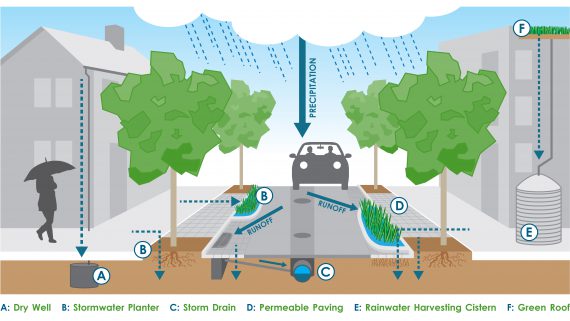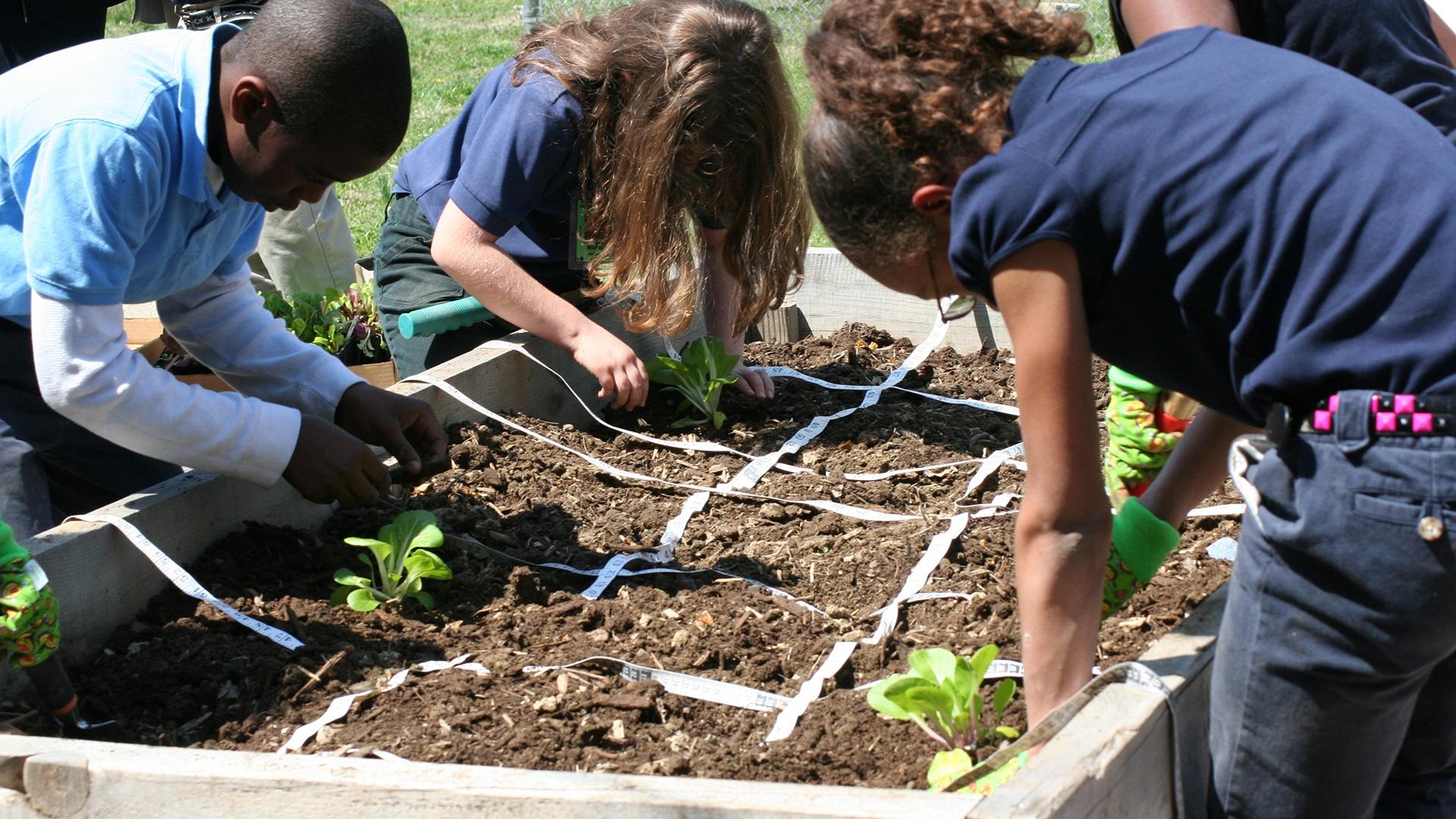
Greening Our Future: A Comprehensive Guide to Sustainable Green Infrastructure Implementation
The world is at a critical juncture. We’re facing unprecedented environmental challenges, from climate change and biodiversity loss to resource depletion and urban sprawl. But amidst these daunting problems, there’s a beacon of hope: sustainable green infrastructure. This isn’t just a trend; it’s a fundamental shift in how we design, build, and manage our cities and landscapes. It’s about integrating nature into our built environment, creating resilient ecosystems that benefit both people and the planet. This guide will delve deep into the world of sustainable green infrastructure implementation, exploring its benefits, strategies, and practical applications.
What is Sustainable Green Infrastructure?
At its core, sustainable green infrastructure refers to a strategically planned and managed network of natural and semi-natural areas. These areas are designed to provide a wide range of ecosystem services, such as stormwater management, air purification, carbon sequestration, and habitat provision. Unlike traditional grey infrastructure (roads, buildings, pipes), green infrastructure leverages the power of nature to address environmental challenges while enhancing the quality of life for communities. It’s an investment in a healthier, more resilient future.
Think of it as nature’s toolbox, filled with solutions that work in harmony with the environment. Examples include:
- Green roofs: Vegetation planted on rooftops to reduce stormwater runoff, improve air quality, and provide insulation.
- Urban forests: Networks of trees and green spaces within cities that provide shade, cool temperatures, and habitat.
- Rain gardens: Depressions in the landscape that collect and filter stormwater runoff, preventing pollution.
- Constructed wetlands: Artificial wetlands designed to treat wastewater and provide habitat.
- Green walls: Vertical gardens that bring greenery to building facades, improving aesthetics and air quality.
- Bioswales: Landscaped channels that convey and filter stormwater runoff.
The Benefits: Why Implement Sustainable Green Infrastructure?
The advantages of implementing sustainable green infrastructure are numerous and far-reaching. It’s not just about making things look pretty; it’s about creating a more livable and sustainable world. Here’s a breakdown of the key benefits:
Environmental Benefits
- Improved Air Quality: Green infrastructure, especially vegetation, absorbs pollutants like particulate matter, nitrogen oxides, and ozone, improving air quality and reducing respiratory problems.
- Reduced Stormwater Runoff and Flooding: Green infrastructure, such as green roofs and rain gardens, absorbs and filters rainwater, reducing the volume of stormwater that flows into sewers and waterways. This helps prevent flooding and reduces the strain on existing infrastructure.
- Enhanced Water Quality: Green infrastructure filters pollutants from stormwater runoff, preventing them from entering rivers, lakes, and oceans. This helps protect aquatic ecosystems and ensures clean water supplies.
- Carbon Sequestration: Trees and other vegetation absorb carbon dioxide from the atmosphere, helping to mitigate climate change. Green infrastructure can play a significant role in reducing greenhouse gas emissions.
- Biodiversity Conservation: Green infrastructure provides habitat for wildlife, including birds, insects, and other species. This helps to conserve biodiversity and create more resilient ecosystems.
- Urban Heat Island Mitigation: Green spaces and vegetation can cool urban areas by providing shade and through evapotranspiration (the process of water evaporating from plants). This reduces the urban heat island effect, making cities more comfortable and reducing energy consumption.
Social Benefits
- Improved Public Health: Access to green spaces has been linked to improved mental and physical health. Green infrastructure can reduce stress, promote physical activity, and improve overall well-being.
- Enhanced Aesthetics and Quality of Life: Green infrastructure can transform urban landscapes, making them more attractive and enjoyable places to live, work, and play.
- Increased Property Values: Properties located near green spaces often have higher values. Green infrastructure can enhance the desirability of a neighborhood.
- Community Building: Green infrastructure projects can create opportunities for community involvement and collaboration, fostering a sense of place and belonging.
- Educational Opportunities: Green infrastructure can serve as outdoor classrooms, providing opportunities for education about nature, sustainability, and environmental issues.
Economic Benefits
- Reduced Infrastructure Costs: Green infrastructure can reduce the need for expensive grey infrastructure, such as stormwater pipes and treatment plants.
- Job Creation: Green infrastructure projects create jobs in design, construction, maintenance, and related fields.
- Increased Tourism: Attractive green spaces can attract tourists and boost local economies.
- Energy Savings: Green infrastructure, such as green roofs, can reduce energy consumption by providing insulation and reducing the urban heat island effect.
- Long-Term Cost Savings: By providing ecosystem services, green infrastructure can reduce the need for costly interventions to address environmental problems.
Implementing Sustainable Green Infrastructure: A Step-by-Step Guide
Implementing sustainable green infrastructure isn’t a one-size-fits-all approach. The specific strategies and techniques will vary depending on the context, including the local climate, existing infrastructure, and community needs. However, there are some fundamental steps that are crucial to success:
1. Planning and Assessment
This is the foundation of any successful green infrastructure project. It involves understanding the local context, identifying needs, and setting goals. Key steps include:
- Conduct a needs assessment: Identify the environmental and social challenges that green infrastructure can address. This might involve assessing stormwater management needs, air quality concerns, or the lack of green space in a community.
- Assess existing conditions: Evaluate the existing natural and built environment. This includes mapping existing green spaces, identifying areas for potential green infrastructure projects, and assessing soil conditions and hydrology.
- Set goals and objectives: Clearly define the goals of the project. What specific environmental, social, and economic benefits are you trying to achieve?
- Engage stakeholders: Involve community members, local businesses, government agencies, and other stakeholders in the planning process. This ensures that the project meets the needs of the community and builds support for implementation.
- Develop a master plan: Create a comprehensive plan that outlines the specific green infrastructure projects that will be implemented, their locations, and their timelines.
2. Design and Engineering
This phase involves translating the goals and objectives into specific designs and plans. Key steps include:
- Select appropriate green infrastructure techniques: Choose the techniques that are best suited to address the identified needs and site conditions. Consider factors such as climate, soil type, and available space.
- Develop detailed designs: Create detailed plans and specifications for each green infrastructure project, including dimensions, materials, and construction methods.
- Obtain necessary permits: Ensure that all necessary permits and approvals are obtained before construction begins.
- Incorporate sustainable design principles: Consider factors such as water conservation, energy efficiency, and the use of locally sourced materials.
- Consider maintenance requirements: Design the green infrastructure to be easy to maintain and ensure that adequate resources are allocated for ongoing maintenance.
3. Construction and Implementation
This is the phase where the designs come to life. Key steps include:
- Select qualified contractors: Choose experienced contractors with expertise in green infrastructure construction.
- Supervise construction: Oversee the construction process to ensure that the projects are built according to the designs and specifications.
- Use sustainable materials: Prioritize the use of locally sourced, recycled, and renewable materials.
- Minimize environmental impacts: Implement measures to minimize the environmental impacts of construction, such as erosion control and dust suppression.
- Monitor progress: Track the progress of the projects and make adjustments as needed.
4. Maintenance and Monitoring
This is an ongoing process that ensures the long-term success of the green infrastructure. Key steps include:
- Develop a maintenance plan: Create a detailed plan that outlines the maintenance activities that will be required for each green infrastructure project.
- Provide regular maintenance: Implement the maintenance plan, including tasks such as mowing, pruning, watering, and removing debris.
- Monitor performance: Track the performance of the green infrastructure projects to ensure that they are meeting their goals. This might involve monitoring stormwater runoff, air quality, or habitat use.
- Make adjustments as needed: Based on the monitoring results, make adjustments to the maintenance plan or the design of the green infrastructure.
- Educate the public: Inform the community about the benefits of green infrastructure and the importance of its maintenance.
Overcoming Challenges in Green Infrastructure Implementation
While the benefits of sustainable green infrastructure are undeniable, implementing it can present various challenges. Being aware of these potential obstacles and proactively addressing them is crucial for success.
Financial Constraints
One of the most significant challenges is securing funding. Green infrastructure projects often require upfront investment. However, it’s important to emphasize the long-term cost savings and economic benefits that green infrastructure provides. To overcome this challenge:
- Explore funding sources: Look for grants, incentives, and financing options from government agencies, foundations, and private organizations.
- Demonstrate cost-effectiveness: Conduct cost-benefit analyses to demonstrate the economic advantages of green infrastructure compared to traditional grey infrastructure.
- Phased implementation: Break down large projects into smaller, more manageable phases to spread out the costs over time.
- Public-private partnerships: Partner with private developers and businesses to share the costs and benefits of green infrastructure projects.
Technical Challenges
Designing and constructing green infrastructure can be technically complex, requiring specialized expertise. Addressing this involves:
- Engage qualified professionals: Hire experienced landscape architects, engineers, and contractors with expertise in green infrastructure design and construction.
- Conduct thorough site assessments: Carefully assess the site conditions, including soil type, hydrology, and existing infrastructure, to inform the design.
- Use appropriate technologies: Select the most appropriate green infrastructure techniques for the specific site and climate conditions.
- Address maintenance needs: Design green infrastructure that is easy to maintain and ensure that adequate resources are allocated for ongoing maintenance.
Regulatory and Policy Barriers
Outdated regulations or a lack of supportive policies can hinder green infrastructure implementation. Overcoming these hurdles involves:
- Advocate for policy changes: Work with local and state governments to update regulations and policies to support green infrastructure.
- Incentivize green infrastructure: Offer tax breaks, rebates, or other incentives to encourage the adoption of green infrastructure.
- Streamline permitting processes: Simplify the permitting process for green infrastructure projects.
- Develop green infrastructure standards: Establish standards and guidelines for the design, construction, and maintenance of green infrastructure.
Public Awareness and Acceptance
Lack of public awareness and understanding can create resistance to green infrastructure projects. To address this:
- Educate the public: Conduct outreach and educational programs to inform the community about the benefits of green infrastructure.
- Engage the community: Involve community members in the planning and design process to build support for projects.
- Demonstrate success: Showcase successful green infrastructure projects to demonstrate their benefits and inspire others.
- Address aesthetic concerns: Ensure that green infrastructure projects are aesthetically pleasing and integrate well with the surrounding environment.
Case Studies: Successful Green Infrastructure Implementation
Learning from successful projects is invaluable. Here are a few examples of how communities are embracing green infrastructure:
Portland, Oregon
Portland has become a leader in green infrastructure, particularly in stormwater management. The city has implemented a comprehensive green streets program, which includes rain gardens, bioswales, and green streets. These projects have significantly reduced stormwater runoff, improved water quality, and enhanced the city’s aesthetics.
New York City, New York
New York City has a strong commitment to green infrastructure. The city has implemented green roofs, green walls, and other green infrastructure projects to manage stormwater, improve air quality, and reduce the urban heat island effect. The city’s green infrastructure plan is a model for other urban areas.
Philadelphia, Pennsylvania
Philadelphia has a comprehensive green infrastructure plan that includes green roofs, rain gardens, and other green infrastructure projects. The city is using green infrastructure to manage stormwater, improve water quality, and revitalize neighborhoods. The city’s plan is a model for other urban areas.
Copenhagen, Denmark
Copenhagen is renowned for its focus on sustainable urban development, with green infrastructure playing a vital role. The city has integrated green spaces, including parks and green roofs, into its urban fabric to manage stormwater, improve air quality, and enhance the quality of life for its residents.
The Future of Green Infrastructure
The future of green infrastructure is bright. As the world confronts the challenges of climate change, resource depletion, and urban growth, the need for sustainable solutions will only increase. Green infrastructure offers a powerful and versatile approach to addressing these challenges while creating healthier, more resilient, and more livable communities. Here’s what the future holds:
- Increased adoption: We can expect to see a significant increase in the adoption of green infrastructure in cities and communities around the world.
- Integration with smart technologies: Green infrastructure will become increasingly integrated with smart technologies, such as sensors and data analytics, to optimize performance and enhance management.
- Focus on climate resilience: Green infrastructure will play a crucial role in building climate resilience by helping communities adapt to the impacts of climate change, such as flooding, heat waves, and droughts.
- Emphasis on equity: Green infrastructure will be used to address environmental inequities and ensure that all communities have access to green spaces and the benefits of nature.
- Innovation and new technologies: We can expect to see continued innovation in green infrastructure, with new technologies and approaches emerging to address the evolving challenges of the 21st century.
Implementing sustainable green infrastructure is not just a trend; it’s a necessity. It’s an investment in our planet and in our future. By embracing green infrastructure, we can create a world that is healthier, more resilient, and more sustainable for generations to come. Now is the time to act. Let’s work together to green our future.


